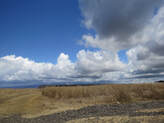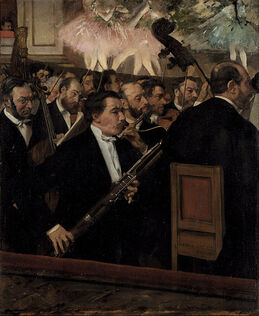 One of my favorite aspects of being a musician was the challenge and the thrill of blending my instrument with those of the musicians with whom I was playing. Being the soloist on occasion was wonderful, but truly it was more exciting to hear my clarinet blend with the oboe, for example, so that it sounded like one instrument, one unique sound. Similarly, there is nothing better than singing in a choir when it is able to become as one multilayered voice. This union of voices, or any other instrument, involves listening as well as some skill, but when it occurs it is a moving experience. Without this union there might be a voice that blares above the choir, or an orchestral instrument dominating the melody when actually playing harmony, or worse, a total cacophony of noise obliterating the intention of the music. This concept also holds true in our liturgical gatherings in which the amalgamation of voices in unity is equally important in singing and speaking our prayer. We do more than just prevent chaos. Rather, this harmony is an integral part of being a community united in Christ. And not only is this unity crucial during the liturgy, but it is important that we take it out the door with us. First, it strengthens the community in every way, and second, peace flourishes when we are one.* This peace arises from the shared desire to offer love and mercy to one another, and it fosters trust in God as we work together to lift up the uncertain or powerless. In short, unity offers hope. 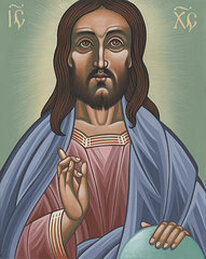 The practice of joining voices in unified prayer goes back to the origins of all organized religious and liturgical practice. For Christians the essence of perfect unity in prayer is found in Jesus’ response to the apostles’ request to teach them to pray: the Lord’s Prayer. Jesus certainly intended this prayer to be universal and foundational. It was for individual private prayer, but as the perfect prayer it was also meant for communal gatherings. Therefore, along with the Eucharist it was at the heart of the Mass from its very beginning, joining the early Christian community into one Body. Their unity in prayer moved them to share all their material goods in common and then their love moved them outward to the poor. (See Acts 1:13-14; 2:42-47; 4:32-37) St. Paul eloquently described this unity when he explained how we are one Body with Christ as the head and we, the many parts (or members). This unity culminates in various gifts of grace in addition to the faith, hope, and love which are received by all the members at Baptism. (1 Corinthians 12&13) As the Church grew, religious communities began to flourish with the same focus on communal sharing of goods and prayer, centering on celebration of the Mass and prayer together multiple times each day, (99.9% of which was sung.) They came together in choir, facing each other in two sections, each side alternating between listening and singing (chanting) the Psalms and prayers of the Liturgy of the Hours in unison. Religious communities and lay people still pray this way, blending their voices into the cadence of the assembly. For those praying in this way, this union is a sublime spiritual experience which also serves to strengthen the bonds of the community. 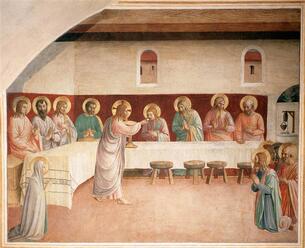 Every time we attend Mass we are invited into a similar experience in prayer which encourages our attentiveness to the worshipers around us so that we do not simply think of what ‘I am saying,’ but of what ‘we are saying’ as a Body. Additionally, the unified cadence of the assembly offers an important reminder that our connection also goes beyond those who are in the church. Even the prayers of the liturgy point outward: for example, every version of the Preface prayer, (said by the priest before the Holy, Holy) ends with a declaration that we join our voices in prayer with the angels and/or saints. In other words, when we pray together, we are united with all the living faithful, all those who have gone before us, and all the choirs of angels. Power and grace abound when the entire Church prays in this unity. Our unity builds up the community, not just within the church building, but beyond the doors. Just as in the early Church, founded on the Body and Blood of Christ and built up by the apostles through the Holy Spirit, we are called to share our prayer and our material goods to work toward unity in the larger community, and hopefully in the world. Thus, praying together fosters unity and brings peace. 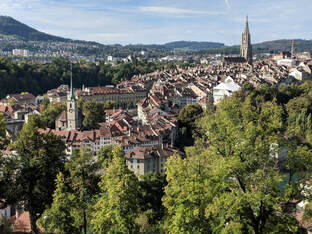 As we focus on prayer this Lent, we can consider the ways we are called to be unified during prayer as a gathered community; that is, we can listen and consider our responses more attentively during our prayer at Mass. Additionally, when we pray at home, we can be mindful that our private prayer also makes us one; whether meditating, or praying a Rosary, the Divine Mercy chaplet or any devotional prayer, we are joining ourselves with a vast army of pray-ers. In these times it is especially important that we pray intentionally so that the bonds of the community are strengthened, cultivating trust in God and fostering hope, which in turn builds peace among peoples. The foundation of the Church was built upon this, so that even when we are by ourselves, we are actually never alone. We are one people, one Body headed by Jesus Christ who is our hope, our strength, and our salvation.  May we cling to the strength that arises from unity, empowered by the Holy Spirit, so that our faith may not falter, nor our hope waiver! May we pray with both the humility to blend our voices and the boldness to form a strengthened community! And may we find wisdom and peace in prayer! Let us meet in the Heart of Jesus! Peace! ©Michele L. Catanese * Remember, unity does not mean that the members of a community are supposed to be totally alike. Rather, like an orchestra (to use the metaphor above) there needs to be different voices which blend in union. It does not mean a loss of identity of the members, but a blending that is not possible unless the many work as one. Being one was something Jesus spoke of and it was what He prayed for us at the Last Supper, for example, (John 17:20) Images: 1. Painting, The Orchestra at the Opera, Edgar Degas, 1870. 2. Icon, Cristo Pantocrator by Fr. William Hart McNichols. You can find this icon at fineartamerica.com/featured/cristo-pantocrator-175-william-hart-mcnichols.html 3. Fresco painting, The Institution of the Eucharist by Blessed Fra Angelico. 4. My photo, Bern, Switzerland. 5. My photo, sheep peacefully gathered together; taken just outside of Kirkwall, Orkney Islands, Scotland. Comments are closed.
|
Heart Speaks to Heart
|

 RSS Feed
RSS Feed
